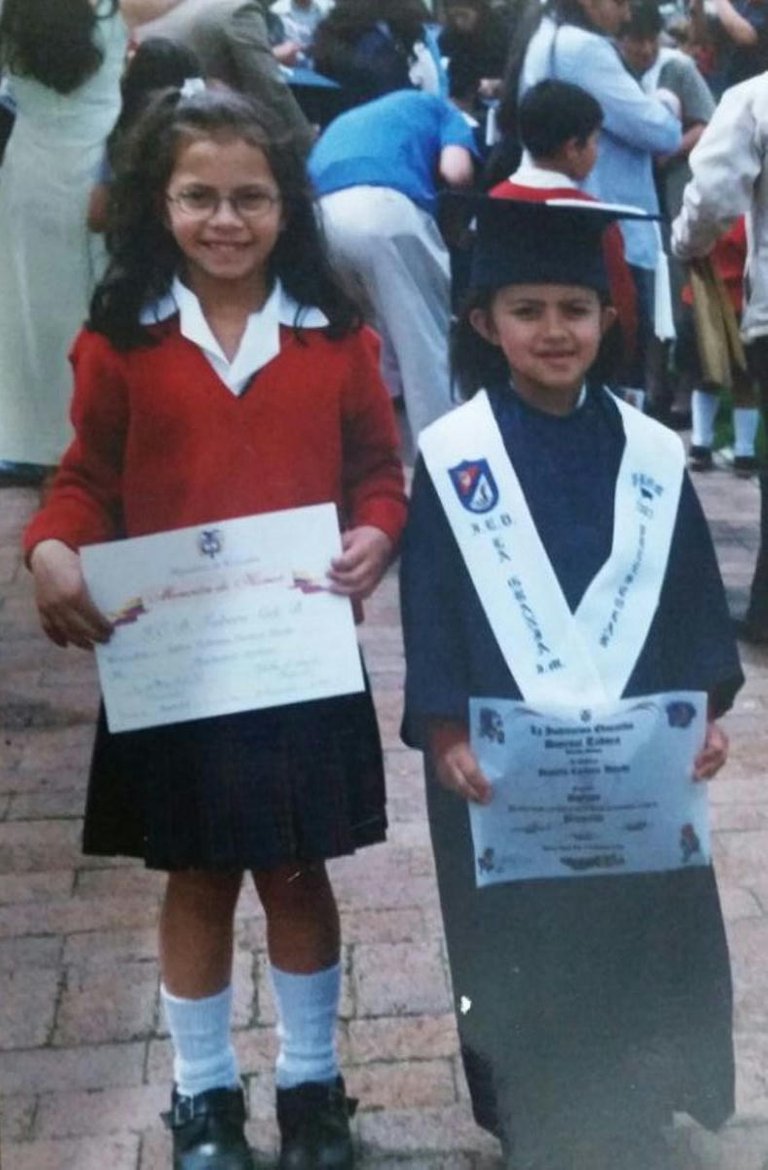
En la foto estamos mi hermana y yo, y como pueden ver, desde los 6 años empecé a utilizar gafas debido a mi problema de astigmatismo y miopía. Siempre había creído que los oftalmólogos tenían razón al sostener que los problemas de visión eran incurables, de forma que sólo habían tres opciones: usar gafas, lentes de contacto o acudir a una operación que posiblemente reduzca el problema.
Sin embargo, hace poco tiempo descubrí que no es del todo cierto. Primero, no sabía en qué consistía exactamente tener miopía o astigmatismo. Los problemas visuales más comunes y que llevan a que una persona tenga que usar gafas son problemas de refracción, que consisten en que la forma del ojo evita que la luz se enfoque correctamente en la retina [1]. El globo ocular más corto o más largo causa errores de refracción como:
Miopía:
Hace que los objetos lejanos se vean borrosos, aunque no afecta la visión de objetos cercanos.

(Fuente)
Hipermetropía:
Es un error de enfoque visual que generalmente se manifiesta con una visión borrosa e incómoda de cerca.
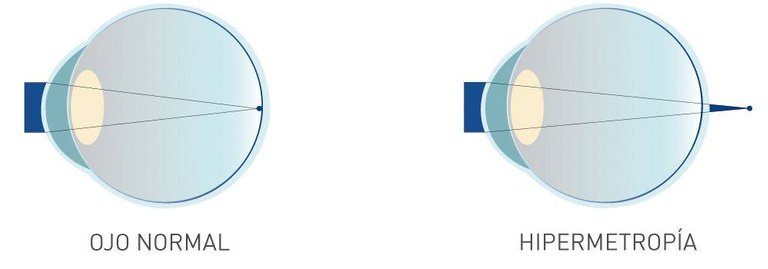
(Fuente)
Astigmatismo:
El astigmatismo se produce cuando la córnea (la capa externa y transparente del ojo) no presenta la misma curvatura en todas sus zonas. La luz procedente de los objetos y que entra en el ojo se enfoca en más de un punto de la retina y provoca una visión borrosa y distorsionada

(Fuente)
En el mundo hay aproximadamente 246 millones de personas con problemas de refracción, es decir, un 3,4% de la población mundial. De este segmento aproximadamente un 90% se concentra en los países de ingresos bajos [2]. En mi país es muy común utilizar gafas y depender de ellas para realizar las tareas del día a día y es muy poco, por consiguiente, lo que se sabe de tratamientos alternativos para curar estos problemas de refracción.
Pero, ¿cuáles tratamientos alternativos hay? ¿Es realmente posible curar los errores de refracción sin cirugías?

(Fuente)
Sí, según William Horatio Bates, M.D., (1860–1931), quien diseñó un método para mejorar la vista expuesto en el libro The Cure of Imperfect Sight by Treatment Without Glasses. El método Bates consta de realizar ejercicios de movimiento de los globos oculares acompañados del control de la respiración y la relajación.

Fundamento del método Bates
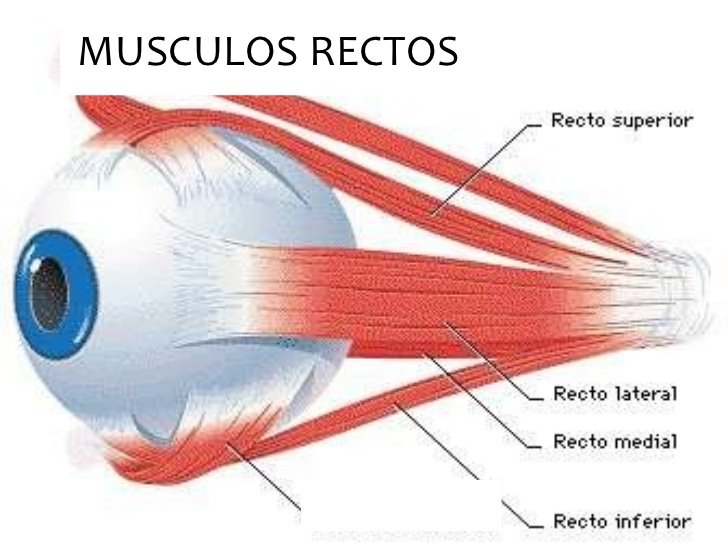
Los ojos son rodeados por músculos, que si se tensionan ocasionan deformación del globo ocular. Si esta es la razón del problema de refracción, la solución está en ejercitar dichos músculos para que relajen y permitan que el ojo vuelva a su forma normal. Esto es lo que logra el método Bates.
Otros libros, como El arte de ver hablan del método Bates y de cómo funcionó en personajes como Aldoux Huxley, escritor que estaba prácticamente ciego antes de llevar a la práctica el método. Y aunque este método es poco conocido debido a que Bates fue debatido por sus colegas quienes rechazaron en su mayoría sus ideas argumentando que no hay evidencia científica de que funcionen, hoy en día hay organizaciones que fomentan su práctica como Visión natural y Volver a ver claro.

¿Te animarías a intentarlo? Yo llevo dos meses practicándolo y a pesar de que ya no uso mis gafas permanentes tan amenudo no tengo dolores de cabeza y no debo forzar mucho los ojos para ver. Sólo googlea Método Bates y encontrarás videos con los que puedes aprender a realizar los ejercicios ¡Gracias por leerme y feliz año nuevo!

In the picture we are my sister and I, and as you can see, from the age of 6 I started to wear glasses due to my astigmatism and myopia problem. I had always believed that ophthalmologists were right in arguing that vision problems were incurable and that there were only three options: wearing glasses, contact lenses, or going into an operation that would possibly reduce the problem.
However, recently I discovered that it is not completely true. First, I did not know exactly what it was to have myopia or astigmatism; the most common visual problems that lead to a person having to wear glasses are refractive problems, which consist in the prevention of the correct light focus on the retina because of the eye shape [[1]](https: / /nei.nih.gov/healthyeyes/problems_sp). An eyeball shorter or longer causes refractive errors such as:
Myopia:
Makes distant objects blurry, but does not affect the view of nearby objects.

(Source)
Hypermetropia:
It is a visual focus error that usually manifests with blurry and uncomfortable vision up close.
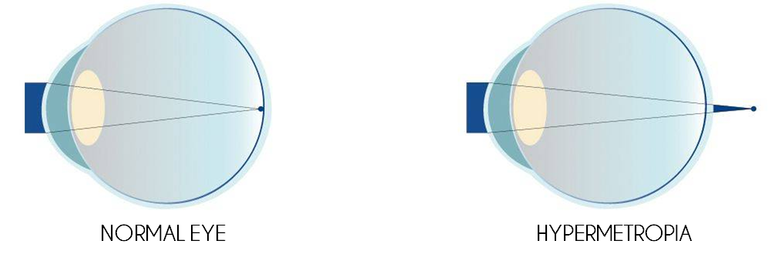
(Source)
Astigmatism:
Astigmatism occurs when the cornea (the outer and transparent layer of the eye) does not exhibit the same curvature in all its areas. Light coming from objects and entering the eye focuses on more than one point of the retina and causes blurred and distorted vision
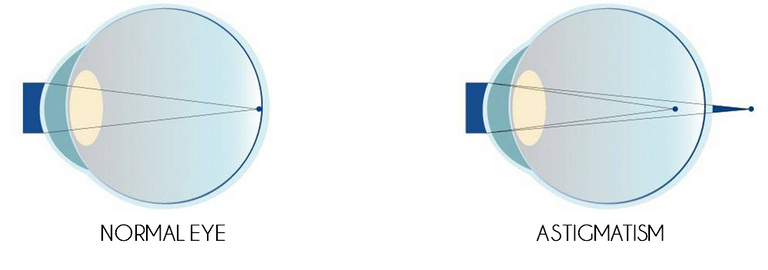
(Source)
In the world there are approximately 246 million people with refractive problems, that is, 3.4% of the world's population. Of this segment, approximately 90% are concentrated in low-income countries [2]. In my country it is very common to wear glasses and depend on them to perform the tasks of day to day and therefore is very little what is known about alternative treatments to cure these problems of refraction.
But, what alternative treatments exist? Is it really possible to cure the refraction problems without surgery?

(Source)
Yes, according to William Horatio Bates, MD, (1860-1931), who designed a method to improve the eyesight, outlined in the book The Cure of Imperfect Sight by Treatment Without Glasses. The Bates method consists of performing exercises of movement of the eyeballs accompanied by the control of breathing and relaxation.

Basis of the Bates Method
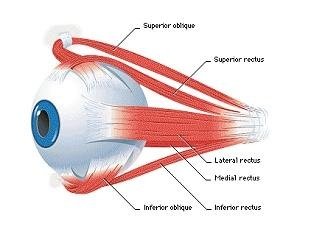
(Source)
The eyes are surrounded by muscles and if they are stressed, cause deformation of the eyeball. If this is the reason of the problem of refraction, the solution is to exercise these muscles to relax them and allow the eye to return to its normal shape. This is what the Bates method accomplishes.
Other books, such as The Art of Seeing talk about the Bates method and how it worked on people like Aldoux Huxley, a writer who was practically blind before practicing the method. And although this method is little known because Bates was debated by his colleagues who rejected most of his ideas arguing that there is no scientific evidence proving they work, today there are organizations that promote their practice as Visión Natural and Volver a ver claro.

wow. nice
I'm glad you like it :)
Nice article
The book of Huxley besides the treatment, hides a big process of self-consciousness and self-awareness related to the process of knowing ourselves.
Yes, that is important too for a succesful treatment :)
This is a really nice post, I too have been wearing corrective lenses since age 6. Nice explanation of what goes on in the eye that causes vision problems :)
Edit: Also, Happy New Year @valenttina!
Thank you! If you decide to try the method tell me how you go with it :) Happy new year for you too!